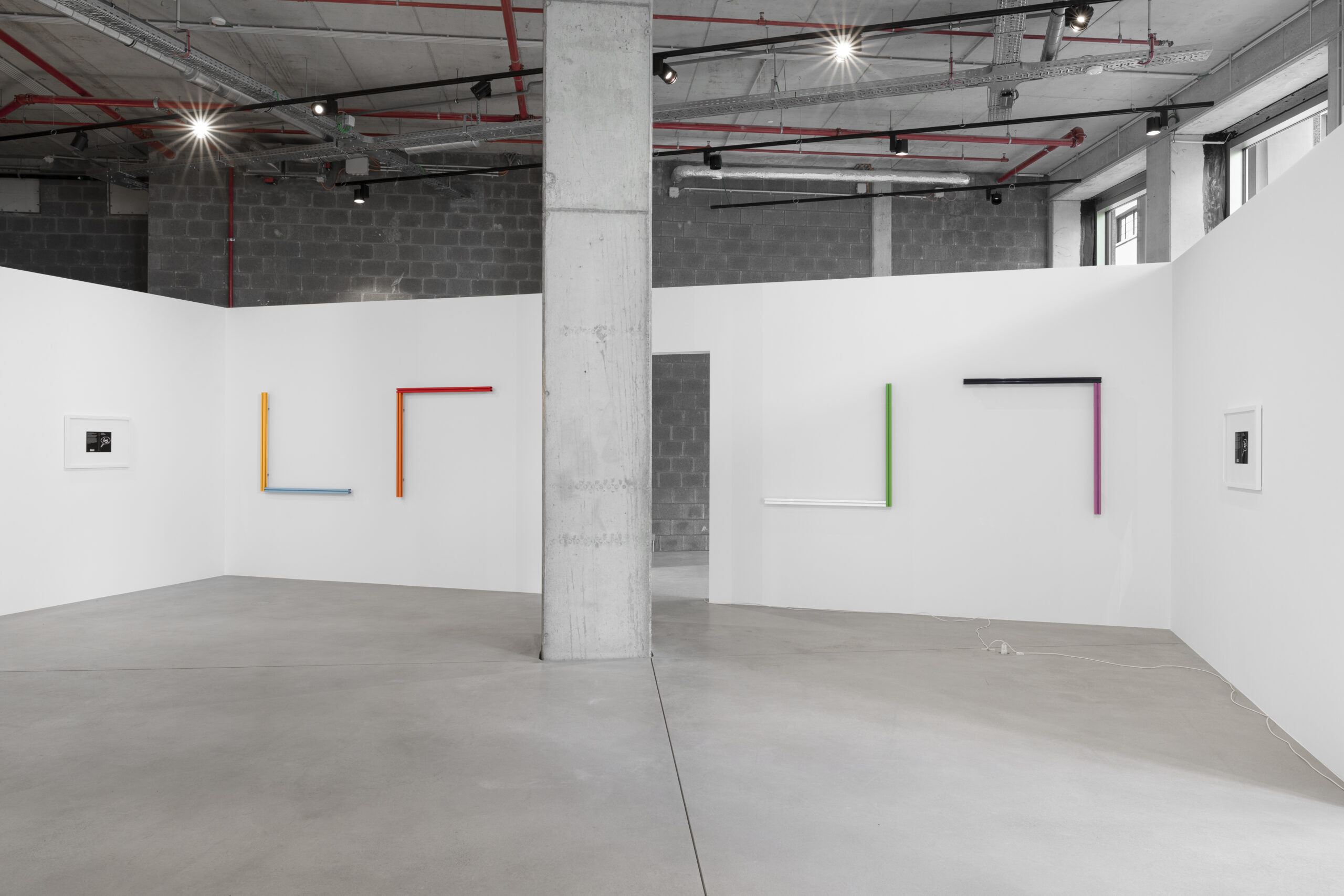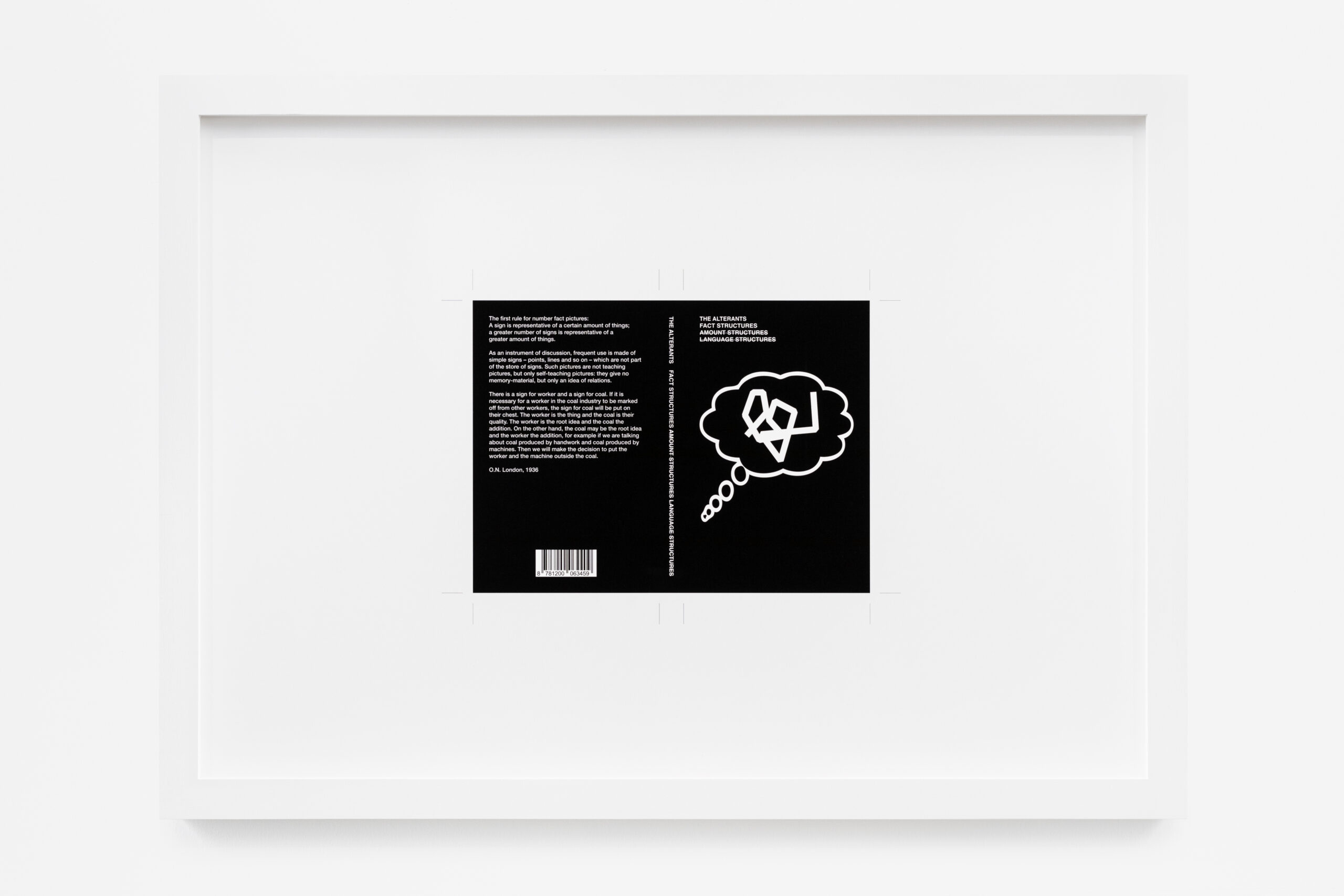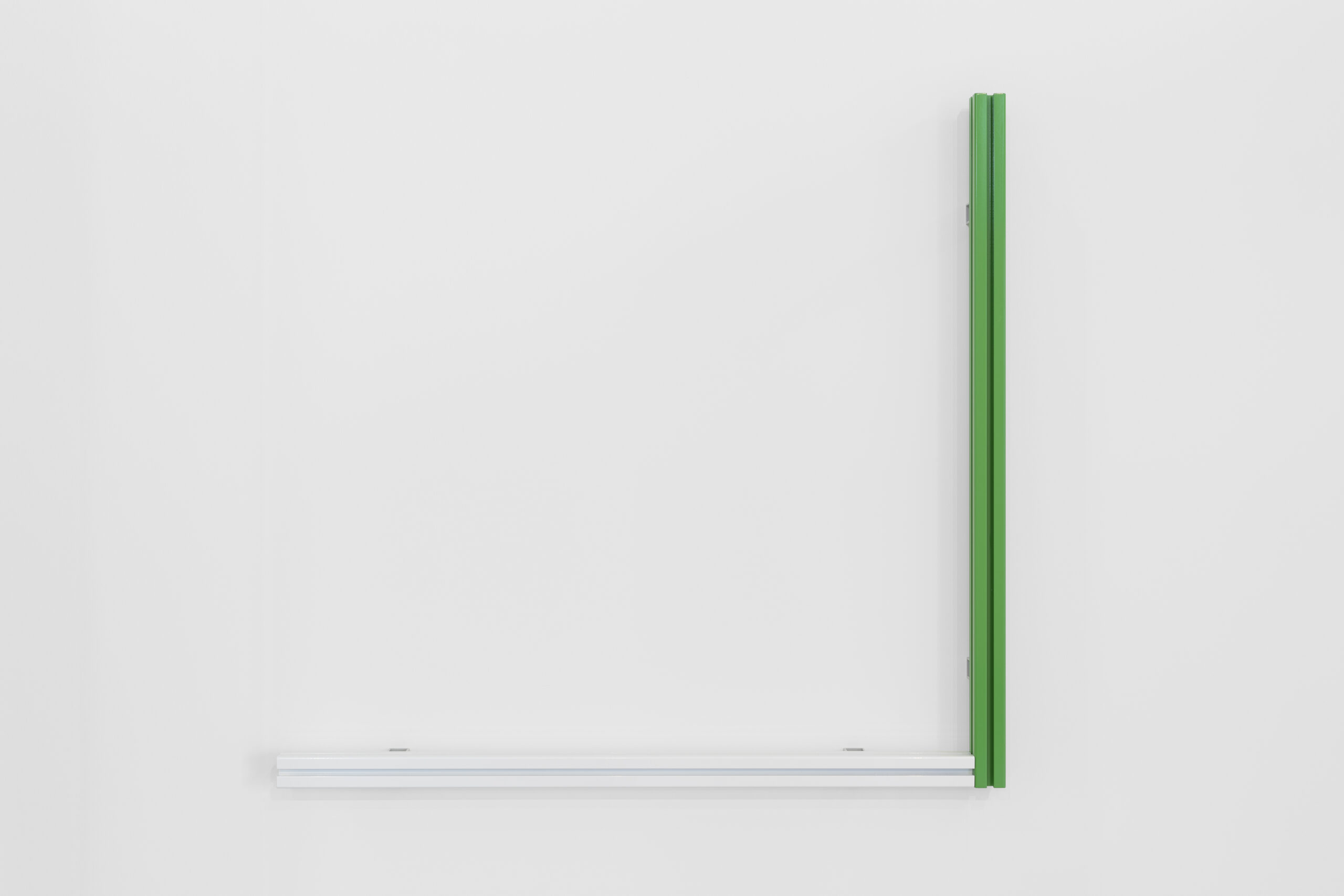Exhibition
01/03 2024 - 19/04 2024

Fact Structures Amount Structures Language Structures
Liam Gillick
KIN presents an exhibition of new work by Liam Gillick: Fact Structures Amount Structures Language Structures, opening on March 1st 2024.
Liam Gillick’s newest production elevates and transforms aluminum t-slot extrusions, a fundamental form of advanced production. The resulting art works, while captivating, defy conventional description. They hover in a reality where representation gives way to suggestion, serving as enigmatic placeholders for modernity and the complexities of social production.
Aluminium t-slot extrusions have a structural adaptability that allows for the generation of smooth, seemingly neutral surfaces. Generally resisting critical attention, the material is central to advanced production in laboratories, semi-conductor facilities and computer controlled manufacturing. Typically unseen, the material paradoxically serves as the staging for rendering the ineffable tangible. Advanced production is created using a material designed to efface itself. Gillick’s transformation and elevation of the material into a new language of abstraction results in a delamination of meaning in relation to any functional interpretation and is rooted in the use of a complex form that produces ever more complex forms.
Central to the artist’s abstract process is the use of vivid colour from the RAL colour system, developed in 1920s Germany. This interest in an optimistic period where new systems of understanding were proposed and rationalised is echoed in the muted announcement of a book that accompanies each work. Each unique book design shows a potential abstract symbol to represent the elusive processes of production that surround us. Drawing on the work of Marie and Otto Neurath’s Isotype system, the artist suggests the difficulties we face when trying to convey complex information today. Combined these new works embody a dual nature – facilitating and resisting rationalisation at the same time.
The persistent theme in Gillick’s work – elevation and delamination – shows a vulnerability embedded in the semiotics of technology. Learning from Yuk Hui’s concept of techno diversity, the artist strips away layers in an attempt to echo the inherent complexity of contemporary discourse, further blurring the boundary between representation and abstraction.
Through this new body of works, Liam Gillick reaffirms his multifaceted practice, meaning to address new and evolving systems of ideological control. His work is articulated in the ongoing tension between minimalist designs – questioning the language of renovated spaces – and a critical approach rooted in text and writing, avoiding a singular starting point in his practice. Gillick invites us to contemplate the intricate interplay between materiality, representation, and meaning — by definition, elusive.
Liam Gillick finds his inspiration in the zone where decisions get made and has aimed, throughout the years, to destabilize these boundaries, to challenge the frameworks of engagement. A space of compromise, strategy, contingency and speculation that resists didactic interpretation and instead alludes to mutable and evasive power structures of our time.
Liam Gillick, born 1964 in Aylesbury, United Kingdom, is an artist based in New York working across diverse forms, including installation, video and sound. Gillick’s work reflects upon conditions of production in a post-industrial landscape including the aesthetics of economy, labour and social organisation. Exposing the dysfunctional aspects of a modernist legacy in terms of abstraction and architecture when framed within a globalized, neo-liberal consensus, his work also extends into structural rethinking of the exhibition as a form.
Gillick’s work has been included in numerous important exhibitions including documenta and the Venice, Berlin and Istanbul Biennales – representing Germany in 2009 in Venice, and solo museum exhibitions have taken place at the Museum of Contemporary Art in Chicago, the Museum of Modern Art in New York and Tate in London. His work is also held in many important public collections including the Centre Pompidou in Paris, the Guggenheim Museum in New York and Bilbao and the Museum of Modern Art in New York. In 2022, he produced A Variabiltiy Quantifier (The Fogo Island Red Weather Station), an artwork that functions as an operational weather station on Fogo Island, Newfoundland & Labrador, Canada. Over the last twenty five years Gillick has also been a prolific writer and critic of contemporary art – contributing to Artforum, October, Frieze and e-flux Journal. He is the author of a number of books including a volume of his selected critical writing. High profile public works include the British Government Home Office (Interior Ministry) building in London and the Lufthansa Headquarters in Frankfurt. Throughout this time Gillick has extended his practice into experimental venues and collaborative projects with artists including Philippe Parreno, Lawrence Weiner, Louise Lawler, Adam Pendleton and the band New Order, in a series of concerts in Manchester, Turin and Vienna. Gillick has also produced a number of short films since the late 2000s which address the construction of the creative persona in light of the enduring mutability of the contemporary artist as a cultural figure. Margin Time (2012) The Heavenly Lagoon (2013) and Hamilton: A Film by Liam Gillick (2014)






















